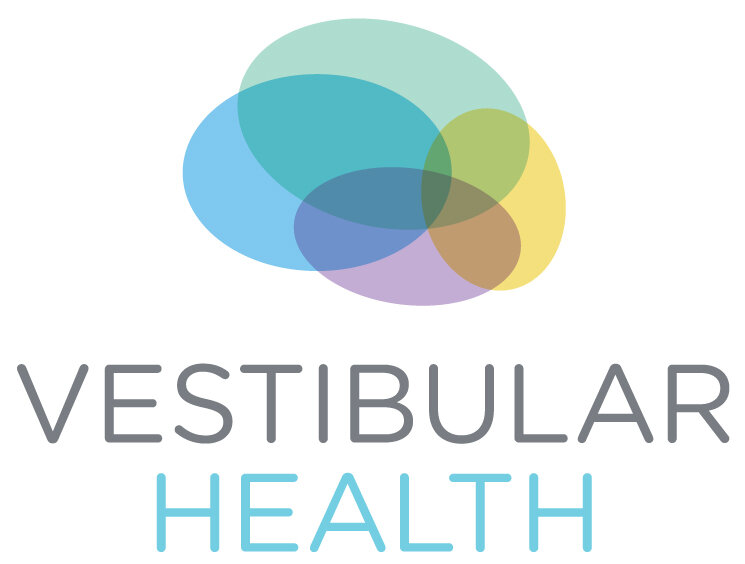Rare vestibular conditions: Cerebellar ataxia with neuropathy and vestibular areflexia (CANVAS)
Vestibular disorders cause problems with dizziness and imbalance. Vestibular disorders can be central, which means the dysfunction is in the brain and brainstem, or they can be peripheral, which means dysfunction in the inner ear.
CANVAS is a vestibular disorder involving both central and peripheral dysfunction that can benefit from specialized physiotherapy treatment. Read on to learn more about CANVAS, common symptoms, diagnosis, treatment, and the role of vestibular rehab.
What is CANVAS?
CANVAS stands for Cerebellar Ataxia with Neuropathy and Vestibular Areflexia Syndrome. It is a group of three problems that occur together:
Cerebellar dysfunction - The cerebellum is the part of the brain that controls coordination. Ataxia means a problem with muscle control and coordination. Cerebellar ataxia describes coordination problems due to dysfunction in the cerebellum. In people with CANVAS, cerebellar problems also cause eye movement abnormalities such as nystagmus. In CANVAS, there is shinkage (atrophy) of the cerebellum seen on MRI.
Neuropathy - Neuropathy means a problem with the nerves. In CANVAS, the nerves that send sensory signals to the brain are affected, causing difficulties with sense of touch, temperature, or pressure. This also causes difficulties with proprioception, the ability to sense the position and movements of your body, which has a significant impact on your balance abilities.
Vestibular dysfunction - Your vestibular system is the part of your inner ear responsible for balance and the ability to see the world clearly when you are in motion. Vestibular areflexia means that your vestibulo-ocular reflex is not working normally. This leads to problems with balance and gaze stability. In CANVAS this problem affects both ears - bilateral vestibular loss.
CANVAS is rare, and we do not really know what causes it to occur. There is some recent research that seems to point to a genetic component.
What are the symptoms of CANVAS?
Symptoms usually start gradually and slowly become worse over time. Difficulties with balance and mobility are often the most problematic symptoms. Problems with balance and walking are often worse in the dark, on uneven surfaces, and with head movements. People with CANVAS usually do not feel off balance when sitting or lying still, and do not usually experience true vertigo.
Symptoms of cerebellar ataxia:
Coordination problems
Problems with walking
Slow slurred speech (dysarthria)
Problems swallowing (dysphagia)
Involuntary eye movements (nystagmus)
Symptoms of neuropathy:
Numbness in the feet and/or hands
Muscle weakness
Feelings of burning or tingling
Orthostatic hypotension (lightheadedness with sitting or standing up quickly due to a sudden drop in blood pressure)
Symptoms of vestibular areflexia:
Problems with balance
Feeling unsteady when walking or standing
Blurry or jumpy vision when your head moves (oscillopsia)
Falls (especially in the dark or on uneven ground)
How do you know if I have CANVAS?
CANVAS is most often diagnosed by a neurologist, neurotologist, or ENT specialist after a comprehensive clinical interview and examination. The examination includes looking at your eye movements and coordination, checking your sensation, and clinical tests of inner ear balance functions. You are usually sent for vestibular function tests, MRI, and nerve conduction tests to confirm this diagnosis.
Your ENT or neurologist may recommend genetic testing to rule out other causes of ataxia related to genetic mutations. A genetic cause for CANVAS was identified in 2019 (recessive repeat expansion of RFC1) and genetic testing to confirm CANVAS is becoming more available.
An experienced physiotherapist with advanced training in vestibular rehabilitation will recognize signs of a central (i.e. brain-related) vestibular problem during their assessment, and can help you navigate referral to medical specialists if needed.
Treatment for CANVAS
Treatment is focused on managing symptoms. Currently, there are no treatments to slow or reverse the progression of CANVAS.
Vestibular rehabilitation physiotherapy can help with balance and mobility, sometimes in combination with occupational therapy and/or neurological physiotherapy. If you have had falls, vestibular physiotherapy can help decrease your risk of falling. You may also help address risk of falls with a home safety assessment by an occupational therapist, or referral to a falls prevention program.
If you experience orthostatic hypotension, your doctor may recommend medication changes, staying well hydrated, and/or compression stockings. Assessment and treatment with a speech-language pathologist may help manage problems with speech and swallowing.
Vestibular rehab for CANVAS
Vestibular physiotherapy for CANVAS can include balance and gait training, gaze stability exercises, habituation exercises, and strengthening exercises. Treatment is individualized and focuses on your specific problems and goals.
With CANVAS, your brain does not receive good signals from your vestibular system which causes problems with gaze stability and balance. Your brain also does not receive good sensory signals from your body about your body position and movements. This means that you need to rely on your vision to maintain your balance. Vestibular rehab can involve exercises to help you learn to rely more on your visual system. It can also provide exercises to up-train residual vestibular function and sensory signals, so you can maximize usage of remaining function.
CANVAS is a rare disorder, so you may benefit from seeing a vestibular rehabilitation physiotherapist who understands and can recognize signs of this condition, and who has experience helping people with this condition.
Want to learn more about how vestibular rehab could help? Call us to speak with one of our physiotherapists.
Thumbnail image source: radiopaedia.org
-
Taki M, Nakamura T, Matsuura H, et al. Cerebellar ataxia with neuropathy and vestibular areflexia syndrome (CANVAS). Auris Nasus Larynx. 2018;45(4):866-870. [link]
Dupré M, Hermann R, Froment Tilikete C. Update on Cerebellar Ataxia with Neuropathy and Bilateral Vestibular Areflexia Syndrome (CANVAS). Cerebellum. 2021;20(5):687-700. [link]
Harrell RG, Cassidy AR, Klatt BN, Hovareshti P, Whitney SL. Vestibular rehabilitation in cerebellar ataxia with neuropathy and vestibular areflexia syndrome (CANVAS)- A case report. Journal of Otology. 2023;18(4):199-207. [link]
